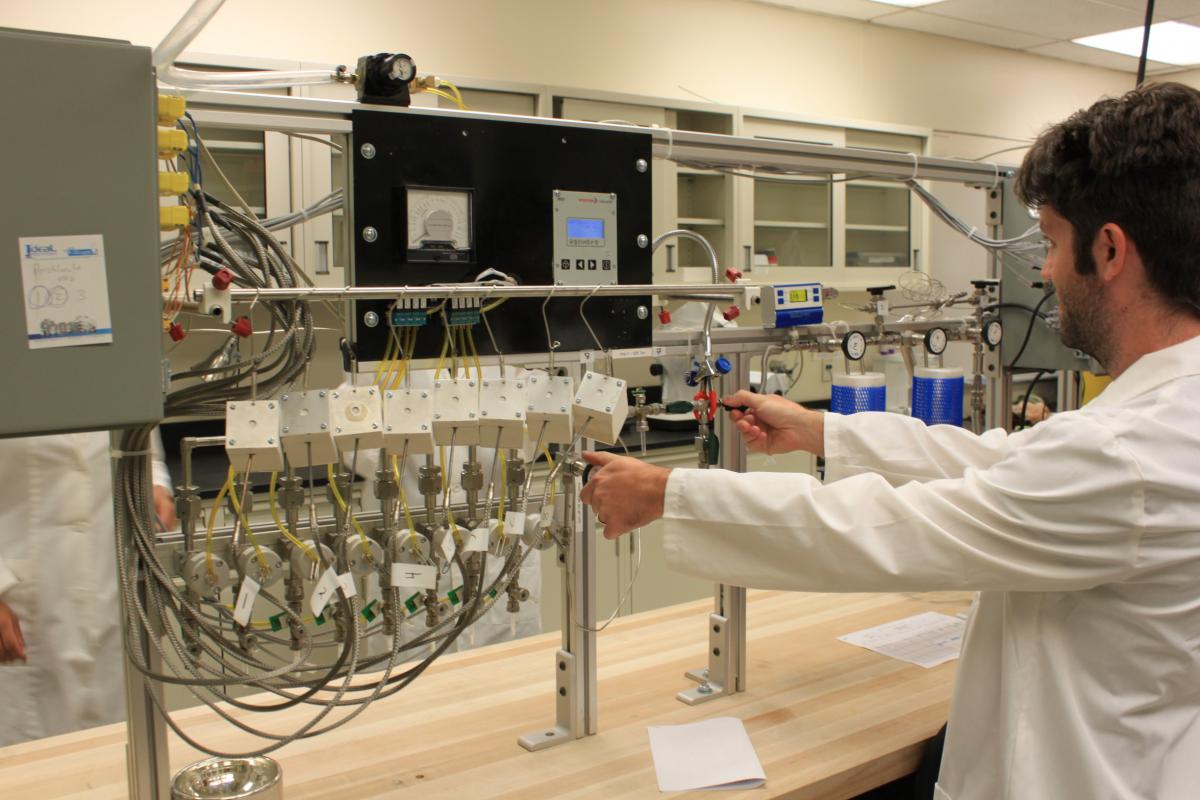Radiocarbon Lab - Sample Submission/Pricing

Storing and packing of samples should be done in such a way to avoid any microbial growth that could introduce organic material. 1. To the fullest extent possible keep all samples dry or freeze them while being stored. 2. Samples should be stored and sent wrapped individually in foil or in small glass vials. Avoid contact with paper or extraneous organic materials or any used containers that might have contained anything organic. Check to make sure that container lids do not have lubricated gaskets.
Sample weights for standard processes: These are optimal mass/volume for general processing. We don’t need larger amounts of sample than are specified here. Leftover materials from processing will be returned only by request, via postpaid methods.
Sample size requirements
| Material |
Sample size |
| Wood/plant material (dried or unburned) |
20-100 mg |
| Charcoal |
5-50 mg (cleaned of soil) |
| Bulk Sediment/Peat |
10-100 mg |
| Bone |
200-1000 mg |
| Bone Collagen |
>5 mg |
| Hair/Fibers |
10-100 mg |
| Carbonates (shells, speleothems, etc..) |
25-30 mg |
| Calcined Bone |
1-5 mg |
Sample Processing Fees
| Sample Type |
Price per Sample (USD) |
Treatment processes |
| Carbon Dioxide |
230$ |
Graphitization |
| Carbonate Minerals |
300$ |
Cleaning, hydrolysis, graphitization |
| Carbon (ready for combustion) |
300$ |
Combustion and Graphitization |
| Organic Carbon (requires pre-processing) |
350$ |
ABA wash, Combustion and Graphitization |
| Bone for Ultrafiltration (including EA-IRMS measurements) |
690$ |
Cleaning, demineralization, gelatinization, ultrafiltration, combustion, graphitization |
| Bone for Amino Acid Hydrolysis (including EA-IRMS measurements) |
820$ |
Cleaning, demineralization, gelatinization, XAD, chromatography, combustion, graphitization |
 All processes involve required pretreatments, AMS determination, correction, and electronic reporting of results. Sample appropriate primary and secondary standards and process blanks are added to each run at no additional cost. Tracer Contamination Requirements If you are working with samples in your lab prior to submission (weighing, cleaning, splitting, etc.) please be sure to determine if anybody might have used 14C tracer materials in your facility (even in the past). We cannot accept any samples unless you affirm to us that your lab has not been used for tracers. Samples that contain high concentrations of modern radiocarbon from tracers containing 14C (“hot” samples) can be catastrophe for accelerator mass spectrometry (AMS) laboratories and related preparation labs. With a half-life of over 5750 years, 14C memory effect induced by contamination in the sample preparation lines and/or the ion source is very difficult to eliminate. If you intend to send samples to us and there is any possibility that somebody could have used 14C tracer in your facility (even in the past) contact us first. If necessary put you in touch with research groups that can send you a monitoring kit for swiping your laboratory and suspect areas, to test for tracer contaminations. This procedure is important for avoiding serious consequences involving contamination of your samples and our laboratory. For more information see the Check Swipe Protocol (PDF file) from the KECK AMS laboratory at U Irvine. Also check out the useful tips to avoid 14C tracer epidemics (PDF file). Of course, if you are sending us samples from the field that have not been processed yet in a lab there is no need to worry about tracer contamination.
All processes involve required pretreatments, AMS determination, correction, and electronic reporting of results. Sample appropriate primary and secondary standards and process blanks are added to each run at no additional cost. Tracer Contamination Requirements If you are working with samples in your lab prior to submission (weighing, cleaning, splitting, etc.) please be sure to determine if anybody might have used 14C tracer materials in your facility (even in the past). We cannot accept any samples unless you affirm to us that your lab has not been used for tracers. Samples that contain high concentrations of modern radiocarbon from tracers containing 14C (“hot” samples) can be catastrophe for accelerator mass spectrometry (AMS) laboratories and related preparation labs. With a half-life of over 5750 years, 14C memory effect induced by contamination in the sample preparation lines and/or the ion source is very difficult to eliminate. If you intend to send samples to us and there is any possibility that somebody could have used 14C tracer in your facility (even in the past) contact us first. If necessary put you in touch with research groups that can send you a monitoring kit for swiping your laboratory and suspect areas, to test for tracer contaminations. This procedure is important for avoiding serious consequences involving contamination of your samples and our laboratory. For more information see the Check Swipe Protocol (PDF file) from the KECK AMS laboratory at U Irvine. Also check out the useful tips to avoid 14C tracer epidemics (PDF file). Of course, if you are sending us samples from the field that have not been processed yet in a lab there is no need to worry about tracer contamination.




